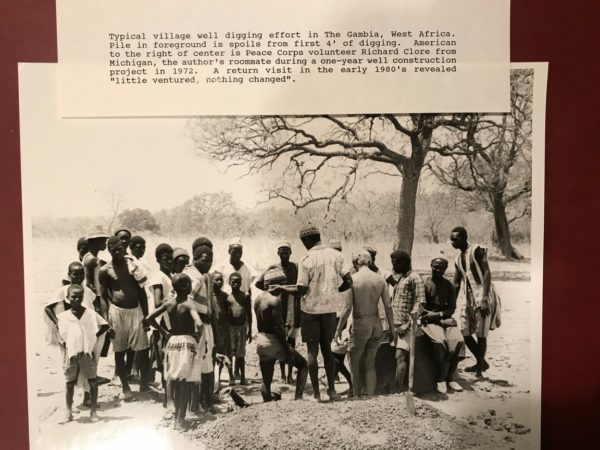John’s Story 1971-73
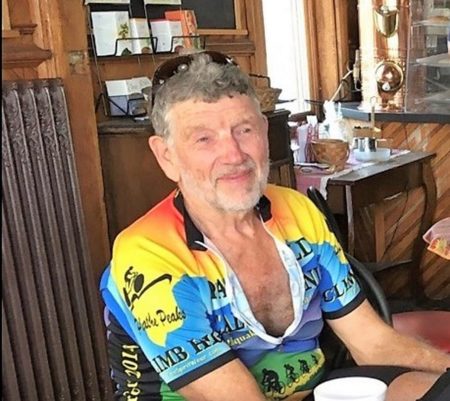
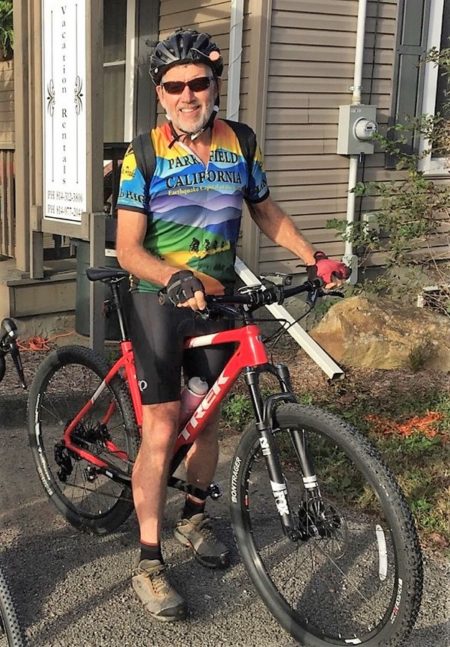
John Wilson was a PCV in The Gambia 1971-73, and has graciously shared his memories and photos about his time in West Africa.
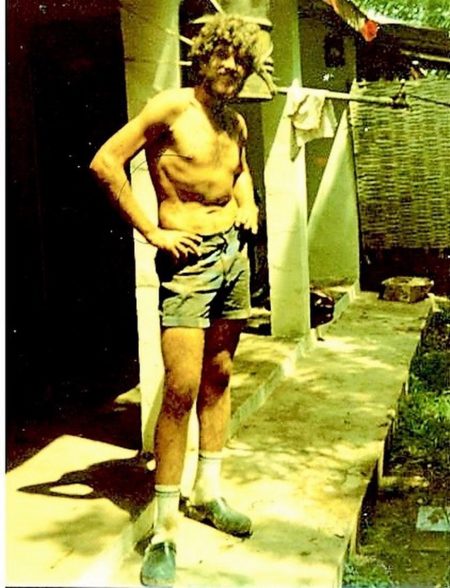
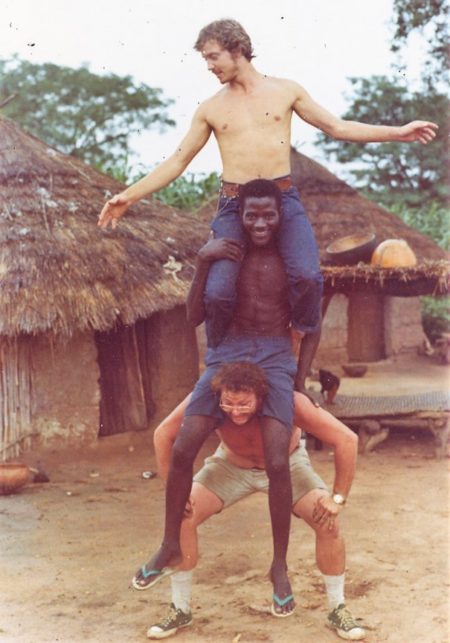
John arrived in Banjul in late June 1971, after graduating with a BS degree in Mechanical Engineering from the University of Akron, Ohio. His group of PCVs were mostly science and math teachers. John says that thanks to an agile and flexible PC country director – Loyd Kepferle, he was able to switch from teaching shop classes to helping initiate a PC well digging program in 1972-73 in Basse, Upper River Region. He was joined in this effort by Dick Clore, who extended for a 3rd year, after teaching math for his first two years.

John’s commentary about his well digging days in the URR
I was a PC well digger in Basse in what I believe was the 6th year for PC in The Gambia. My two years in The Gambia were life-changing, and in many ways the most important two years of my adult life. I’ve spent many years working and travelling internationally, and have had continuous involvement in the developing world since my PC days.
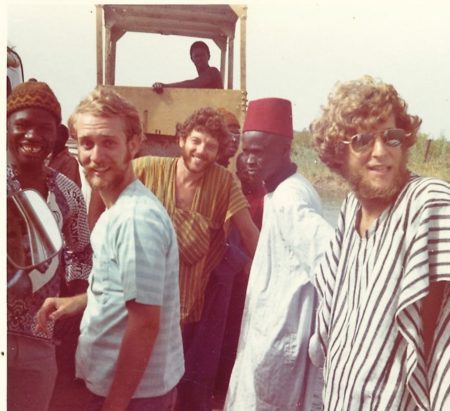
We dug several new wells and maintained many other existing wells. The new ones were major construction projects, involving gathering stone and sand to make many cubic yards of concrete, which was poured behind steel shutters, and were dug into the ground by hand, 4 feet at a time. Deeper wells could take months to complete. The project included introduction of safer construction practices, as well as improving the water quality, and water volume in the wells.
Photo caption: Typical village well digging effort, in The Gambia, West Africa. Pile in foreground is spoils from the first 4′ of digging. American to the right of center is PCV Dick Clore from Michigan, John’s roommate during a one-year well construction project in 1972. A return visit in the early 1980s revealed “little ventured – nothing changed”.
After we had completed a couple wells in 1972, the word spread around the URR. Around January of 1973, a “delegation” came to Basse, on foot of course, with the mission to “Speak with the Peace Corps well diggers”. I found them resting quietly one morning in my ‘compound’ at St. George’s school teachers’ quarters. They wanted help putting a well in their village, and asked if I would return with them to discuss a project with their Alkali.
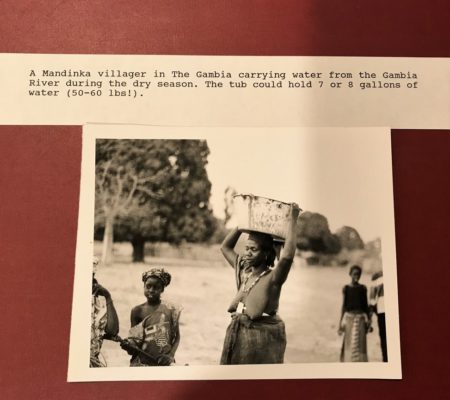
We left that day, and wound up walking for 7 or 8 hrs, after crossing to the north side of the river, and were left off by a ‘bush taxi’ north of Basse. We arrived late in the evening, and I was given a mat to rest on while we waited to speak with the Alkali. I promptly fell sound asleep, and when I awoke several hours later, the entire village was assembled. They had been waiting for several hours for me to awake! I explained what they would need to do to get ready for a well project. I put sticks in the ground to show how the pile of rocks should be, and the pile of sand should be, so they would be ready to make the concrete for the well. Within a couple weeks I got word that they were ready with the materials. We went back to the village to find the sand and rock piles in place, and that village became the site of the second PC well project.
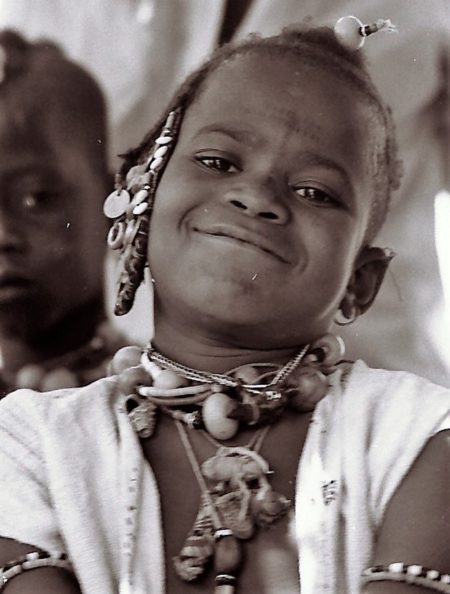
This girl from a village near Base, seems pretty proud of her jewelry collection which appears to include ‘jus-jus’ to ward off bad luck.
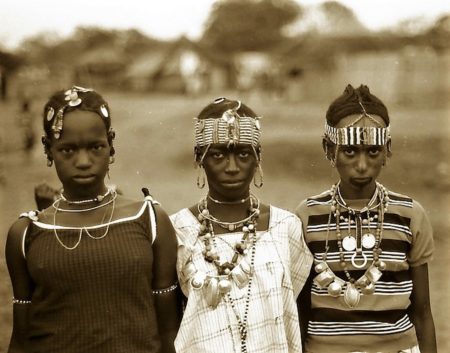
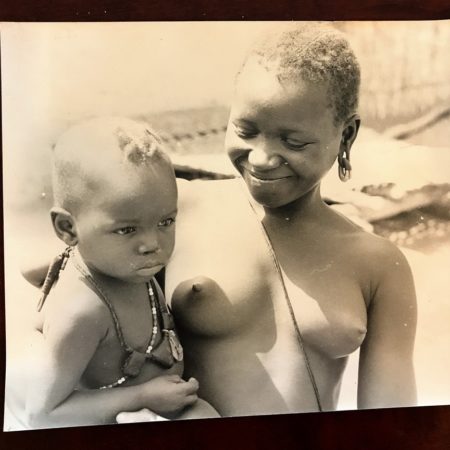
John’s Comments About the Mandinka Language
Regarding learning Mandinka. I had no prior experience with foreign languages, save for two years of high school Latin. We did (I think 8 weeks) in-country intensive Mandinka training, but I wasn’t much good with it until into my second year, by then I had to work daily with the villagers, many of whom had probably never seen a white person before, let alone have any exposure to English. I got enough confidence from that experience to become fluent in Spanish during my years with Goodyear, which included projects in Mexico, Central and South America. I even published a book on mastering Spanish verbs, based on how I’d learned Mandinka in Basse.
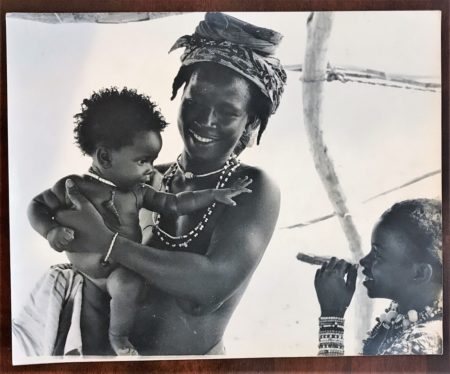
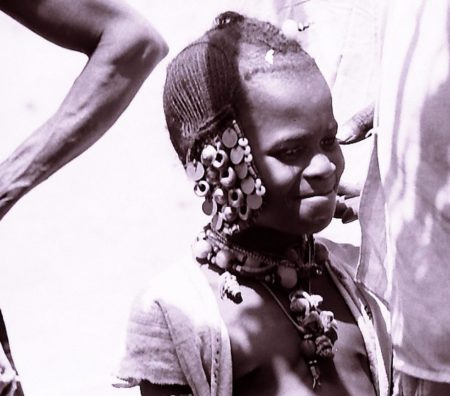
Dick Clore (pictured above photographing a well digging project) was our group’s star Mandinka speaker. He was completely fluent, and frequently quoted from the many proverbs important to Mandinka culture. He was an enormous asset when interacting with the villages on the well projects. I remember one Alkali being so surprised that a white man could speak Mandinka, he had a translator who said exactly what Dick had just said—less the American accent. Dick: ‘nlafita ila colongo jube’ – Translator: ‘aco, nlafita ila colongo jube’. After which the Alkali would nod in understanding. It reminded me of that scene in Woody Allen’s movie Bananas, where they translated English, without an accent to English, with a Spanish accent.
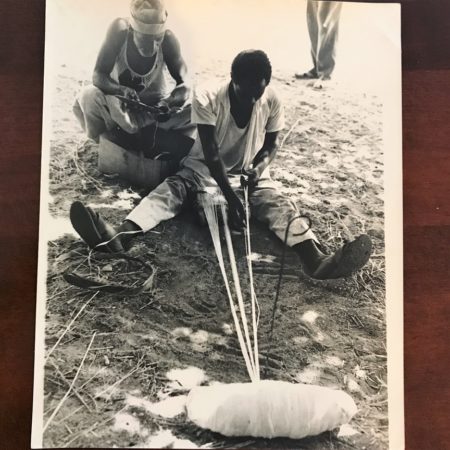
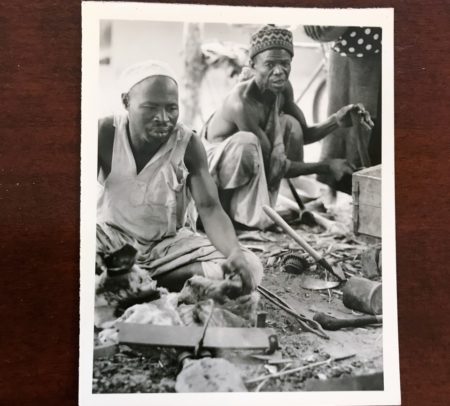
Additional Comments About John’s Time in The Gambia
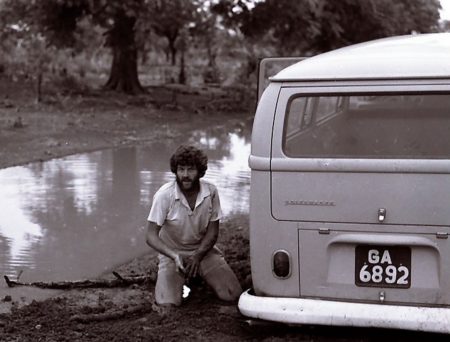
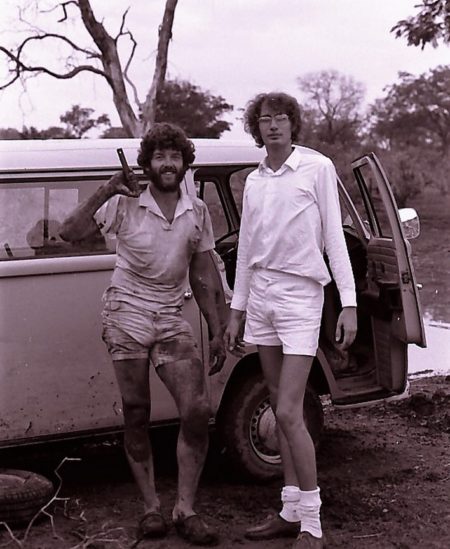
We met Alex Haley in 1972 who was finishing up his work for his book Roots. As I recall he made several trips to Gambia in ‘71-73, and later before publishing his pulitzer-winning book in 1976. I wonder if this book put his ancestors’ village Juffureh on the map? I recall being disappointed in how little Mandinka appeared in the book, which was criticized by some reviewers for too much focus on the Mandinka language. Go figure.
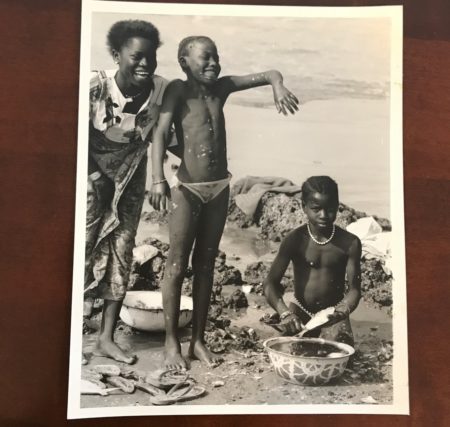
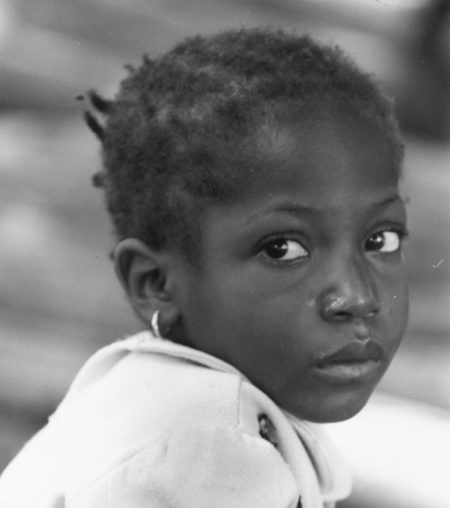
Another celebrity visitor to Basse was Betsy Buckley – a niece (as I recall) of noted conservative writer, William F Buckley. Betsy was traveling with a Hawaiian guy named Sam, and they settled into a small village outside of Basse for several months. I think she was a writer for the Spanish edition of Harper’s magazine.
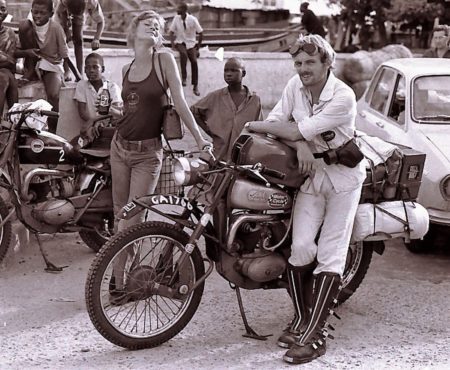
I was in a two year relationship with Connie Wagner, whose family opened the Wadner Beach Hotel in the late 1960’s, after locating Radio Syd in Banjul. Radio Syd had been operated as a “pirate” radio station in Sweden, later UK, the Canaries, and finally wound up in The Gambia. This was the ‘beachhead’ for building the hotel, and creating the tourist industry in The Gambia. Connie joined me in the US for a couple months. I had promised to take her ‘west’ and she was thinking California, but we only made it as far as West Virginia. That was the end of that relationship! Actually, we remain life-time friends, and Connie still spends some months every year in Banjul.
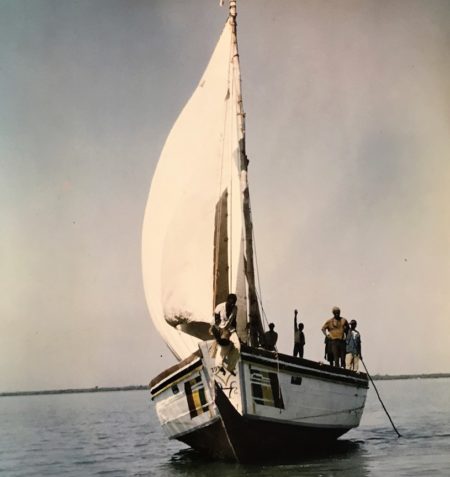
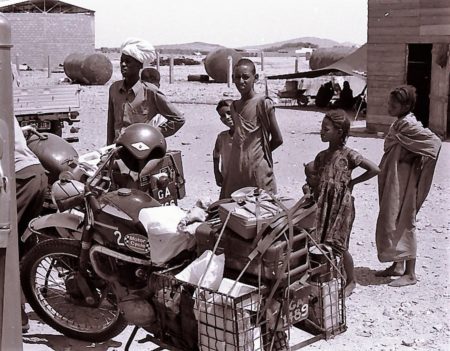 John left The Gambia in 1973 via a motorcycle trip across the Sahara with Mike Bennett from the VSO (Voluntary Service Overseas). They rebuilt motorcycles purchased at a Gambian Police auction. Click this link to view the 22 minute YouTube video that tells their story with incredible photos – I won’t even try to summarize their adventure because the video is amazing.
John left The Gambia in 1973 via a motorcycle trip across the Sahara with Mike Bennett from the VSO (Voluntary Service Overseas). They rebuilt motorcycles purchased at a Gambian Police auction. Click this link to view the 22 minute YouTube video that tells their story with incredible photos – I won’t even try to summarize their adventure because the video is amazing.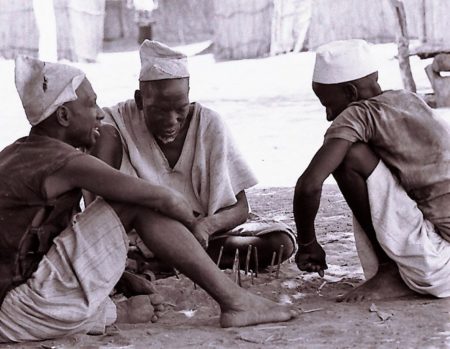
The well was remarkably the same as when we had finished it. The water was good and plentiful, especially since this was in the dry season. The Alcali told me (I remembered enough Mandinka to communicate), that the well had never gone dry, and people came from other villages to ask for water from that well. I was very pleased that our techniques had proven successful over time.
I continued my interest in water for Africa through participation in a non-profit organization called The Global Energy Society. The project started in the early 1990’s called Africa 1000. Below is a letter the local paper published in 1987.
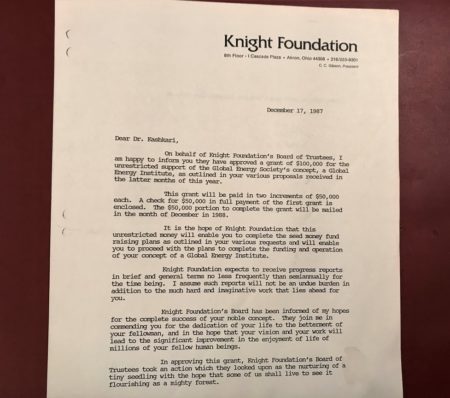
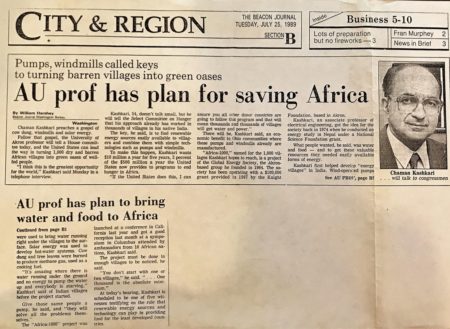 I was instrumental in raising $100,000 from a private donor, which was used to partner with World Vision in Senegal, to construct deep bore wells equipped with windmills. I spent several weeks in St. Louis (North-west Senegal) in 1990 constructing the first such well in Senegal. It was equipped with an Ohio-built farm-style windmill, which provided continuous water flow into tanks and irrigation trenches. To my knowledge it is still in operation.
I was instrumental in raising $100,000 from a private donor, which was used to partner with World Vision in Senegal, to construct deep bore wells equipped with windmills. I spent several weeks in St. Louis (North-west Senegal) in 1990 constructing the first such well in Senegal. It was equipped with an Ohio-built farm-style windmill, which provided continuous water flow into tanks and irrigation trenches. To my knowledge it is still in operation.
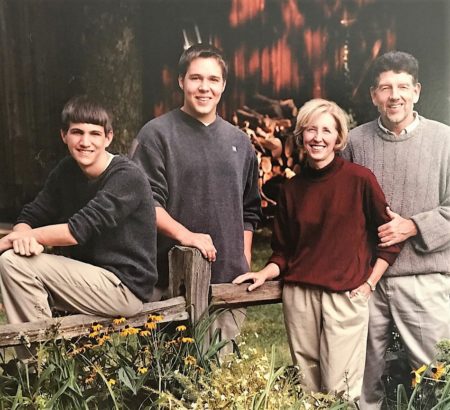
I have been married to attorney Patricia Pacenta for 37 yrs and we have 2 sons. Our elder son Sean was a PCV in Ethiopia, several cousins, nieces and nephews did PCV service including a cousin who was in a water resources program in PC Chile.
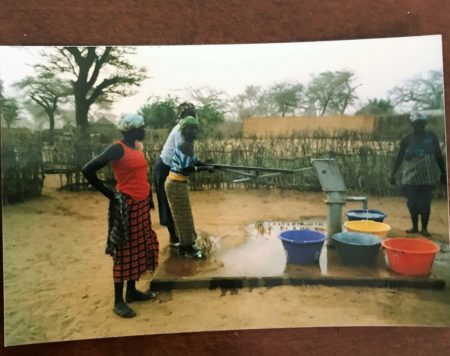
This type of pump was not in use in 1973, and is a big sanitary improvement over the open wells that were typical in 1973.

I am so impressed with the work the PCVs did during the early years, and honored to be able to share their stories. I have other PCVs sending me material, and I look forward to presenting more stories in my historical post series.
I hope you can take the time to watch the YouTube Video of John’s motorcycle trip across the Sahara in 1973 – it is about 22 minutes long, but has amazing photos and commentary about an incredible journey few will ever experience.
